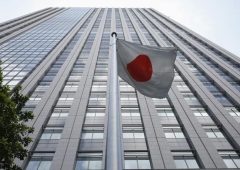Could a Weaker Dollar Boost Bitcoin Prices?
04.09.2024 13:00 2 min. read Alexander Stefanov
Bitcoin and cryptocurrency prices have risen this year, which correlates with the US dollar index falling to its lowest point in 2024.
As the Federal Reserve signals a potential interest rate cut, the BTC market is experiencing significant volatility. The largest cryptocurrency by market cap is trading near $59,300, up from around $40,000 in January, due to expectations of increased liquidity. There are growing concerns that China’s potential actions could further impact the market, which coincides with fears of a collapse in the US dollar.
Recent pronouncements by economists such as Peter Schiff have suggested that the dollar could continue to fall, potentially leading to an economic crisis. The Federal Reserve’s recent dovish stance, highlighted at the Jackson Hole symposium, has contributed to the weakening of the dollar.
With expectations that the Fed will begin a rate cut cycle in mid-September, analysts are anticipating significant currency volatility.
Meanwhile, Bitcoin’s momentum has stalled since the start of the year, raising doubts about its performance through the end of 2024. Despite some bounces, market fundamentals have weakened and there are concerns that September could mark a critical turning point.
Historically, September has been a challenging month for Bitcoin, with the average value down around 6%. However, a potential interest rate cut by the Fed could boost Bitcoin as a store of value by weakening the dollar, encouraging investment in risk assets.
-
1
Bitcoin: What to Expect After Hitting a New All-time High
10.07.2025 14:00 2 min. read -
2
Peter Brandt Issues Cautious Bitcoin Warning Despite Bullish Positioning
10.07.2025 20:00 2 min. read -
3
Standard Chartered Becomes First Global Bank to Launch Bitcoin and Ethereum Spot Trading
15.07.2025 11:00 1 min. read -
4
Vanguard Now Owns 8% of Michael Saylor’s Strategy, Despite Calling BTC ‘Worthless’
15.07.2025 17:09 2 min. read -
5
Bitcoin Reaches New All-Time High Above $116,000
11.07.2025 7:56 1 min. read
Ethereum Flashes Golden Cross Against Bitcoin: Will History Repeat?
Ethereum (ETH) has just triggered a golden cross against Bitcoin (BTC)—a technical pattern that has historically preceded massive altcoin rallies.
Bitcoin Banana Chart Gains Traction as Peter Brandt Revisits Parabolic Trend
Veteran trader Peter Brandt has reignited discussion around Bitcoin’s long-term parabolic trajectory by sharing an updated version of what he now calls the “Bitcoin Banana.”
Global Money Flow Rising: Bitcoin Price Mirrors Every Move
Bitcoin is once again mirroring global liquidity trends—and that could have major implications in the days ahead.
What is The Market Mood Right Now? A Look at Crypto Sentiment And Signals
The crypto market is showing signs of cautious optimism. While prices remain elevated, sentiment indicators and trading activity suggest investors are stepping back to reassess risks rather than diving in further.
-
1
Bitcoin: What to Expect After Hitting a New All-time High
10.07.2025 14:00 2 min. read -
2
Peter Brandt Issues Cautious Bitcoin Warning Despite Bullish Positioning
10.07.2025 20:00 2 min. read -
3
Standard Chartered Becomes First Global Bank to Launch Bitcoin and Ethereum Spot Trading
15.07.2025 11:00 1 min. read -
4
Vanguard Now Owns 8% of Michael Saylor’s Strategy, Despite Calling BTC ‘Worthless’
15.07.2025 17:09 2 min. read -
5
Bitcoin Reaches New All-Time High Above $116,000
11.07.2025 7:56 1 min. read


